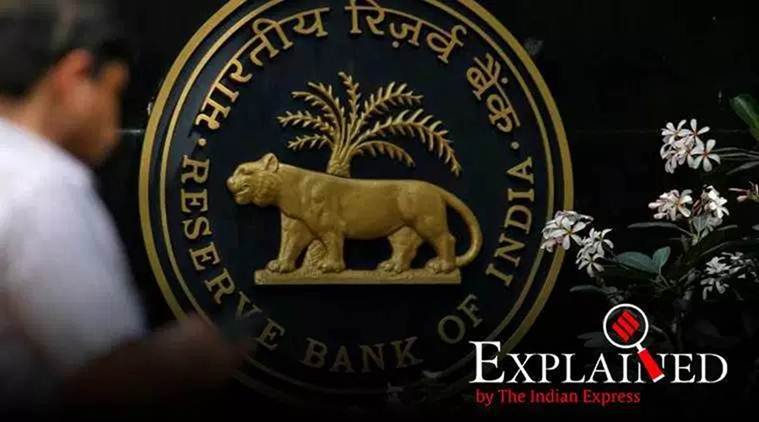Pami Dua, Director, Delhi School of Economics, said minimising the negative impact of the pandemic on economic growth required a multi-pronged approach, comprising monetary, fiscal and other policy measures.
The minutes of the Reserve Bank of India’s Monetary Policy Committee (MPC) meeting are always interesting, especially so during extraordinary times when the meetings precede big announcements.
On March 27, the last day of the three-day MPC meeting (March 24, 26-27) that decided on the quantum of the cut in repo rate, the RBI deployed multiple weapons in its armoury to fight the COVID-19 pandemic.
It cut the key policy rate (repo rate) by 75 basis points to 4.4%, slashed the Cash Reserve Ratio (CRR) by 100 basis points to 3%, and expanded the Marginal Standing Facility for banks — besides easing working capital financing, announcing Targeted Long-Term Repo Operations, and a much-expected moratorium on all bank loans.
RBI Governor Shaktikanta Das was poised, he gave hope, and he signed off with, “COVID-19 is upon us; but this too shall pass.”
As far as the monetary policy is concerned, the RBI did what it could. But what were the expectations of the MPC members from the government?
Just the previous day, on March 26, Finance Minister Nirmala Sitharaman had announced a Rs 1.7 lakh crore fiscal package (0.8 per cent of GDP). Was it enough?
Did MPC members take note of it, and did they have a view on the fiscal policy, as they sat down to take a final call on March 27?
A closer reading of the MPC minutes is revealing. They provide a window into the minds of the MPC members, and also show if the members speak out on fiscal policy, which is completely the domain of the government, but which plays an equally important, if not bigger, role when the economic disruption is of the scale that is being witnessed now.
On Day 1 of the MPC meet, March 24, at 8 pm, Prime Minister Narendra Modi announced a national lockdown effective that midnight.
On Day 2 of the MPC meet, March 26, around 1 pm, Finance Minister Nirmala Sitharaman announced a Rs 1.7 lakh crore fiscal package, about 0.8 per cent of the GDP.
On Day 3, March 27, the committee is likely to have met before 10 am, with the majority voting for a 75 basis point cut in repo rate. The RBI Governor addressed the media at 10 am.
The MPC minutes were made public on April 13, the 14th day since the meeting was held, as per Section 45ZL of the RBI Act, 1938. Two members — Chetan Ghate and Pami Dua — voted for a lower, 50 basis point, cut. The other four — Ravindra Dholakia, Janak Raj, Michael Patra, and Shaktikanta Das — voted for a bigger cut of 75 basis points.
Only three of the six MPC members made any reference to fiscal policy in their statement.
Ghate was the most emphatic in his expectations from the government. Attempting to address the issue of division of labour between monetary policy, fiscal policy, liquidity policy, and social insurance policy, in stimulating aggregate demand, he pointed out that the fiscal stimulus (Rs 1.7 lakh crore, or 0.8% of GDP) was a ‘relief measure’ (social insurance) rather than a stimulus.
“A relief is not a permanent fix… the effect of this measure… will dissipate quickly,” he said.
He, in fact, said he is awaiting details on a second stimulus package, and would rather have the fiscal stimulus loaded on the tax side rather than on the expenditure side.
Citing a variety of studies, he said government expenditure internationally has a multiplier of less than one, whereas tax multipliers are larger (more than one). The word ‘fiscal’ appeared five times in his statement.
Pami Dua, Director, Delhi School of Economics, said minimising the negative impact of the pandemic on economic growth required a multi-pronged approach, comprising monetary, fiscal and other policy measures.
She described the government’s financial package as “comprehensive”, and added that “fiscal policy has a major role to play in combating the economic effects of the pandemic”. In Dua’s statement, ‘fiscal’ appeared thrice.
Ravindra Dholakia, Professor, IIM Ahmedabad, said under such unprecedented circumstances, governments in all countries have come up with policy measures on both fiscal and monetary fronts to provide a substantial booster dose, putting aside all other concerns like inflation and fiscal discipline.
He also expected the government to do more. “The Central Government has already started providing fiscal boost and may continue doing so to revive the economy,” he said. In his statement too, ‘fiscal’ appeared thrice.
Individual statements by other members of the MPC do not have any reference to fiscal policy.
In the ‘Outlook’ segment of the MPC minutes, the word ‘fiscal’ does appear thrice, and even points out that “strong fiscal measures are critical to deal with the situation”, which the Governor also mentioned while reading out the Seventh Bi-Monthly Monetary Policy Statement on March 27.
These are unprecedented times, where it is expected that the government and the RBI work in close coordination, and in tandem. All regulators, be it SEBI or the RBI, worked very well together during the global financial crisis of 2008. A vivid account of how the government of the day tackled the crisis was captured in a report ‘How they saved the India story’ almost a decade ago in The Indian Express on September 17, 2010
? The Indian Express is now on Telegram. Click here to join our channel (@indianexpress) and stay updated with the latest headlines
For all the latest Explained News, download Indian Express App.
Source: Read Full Article





